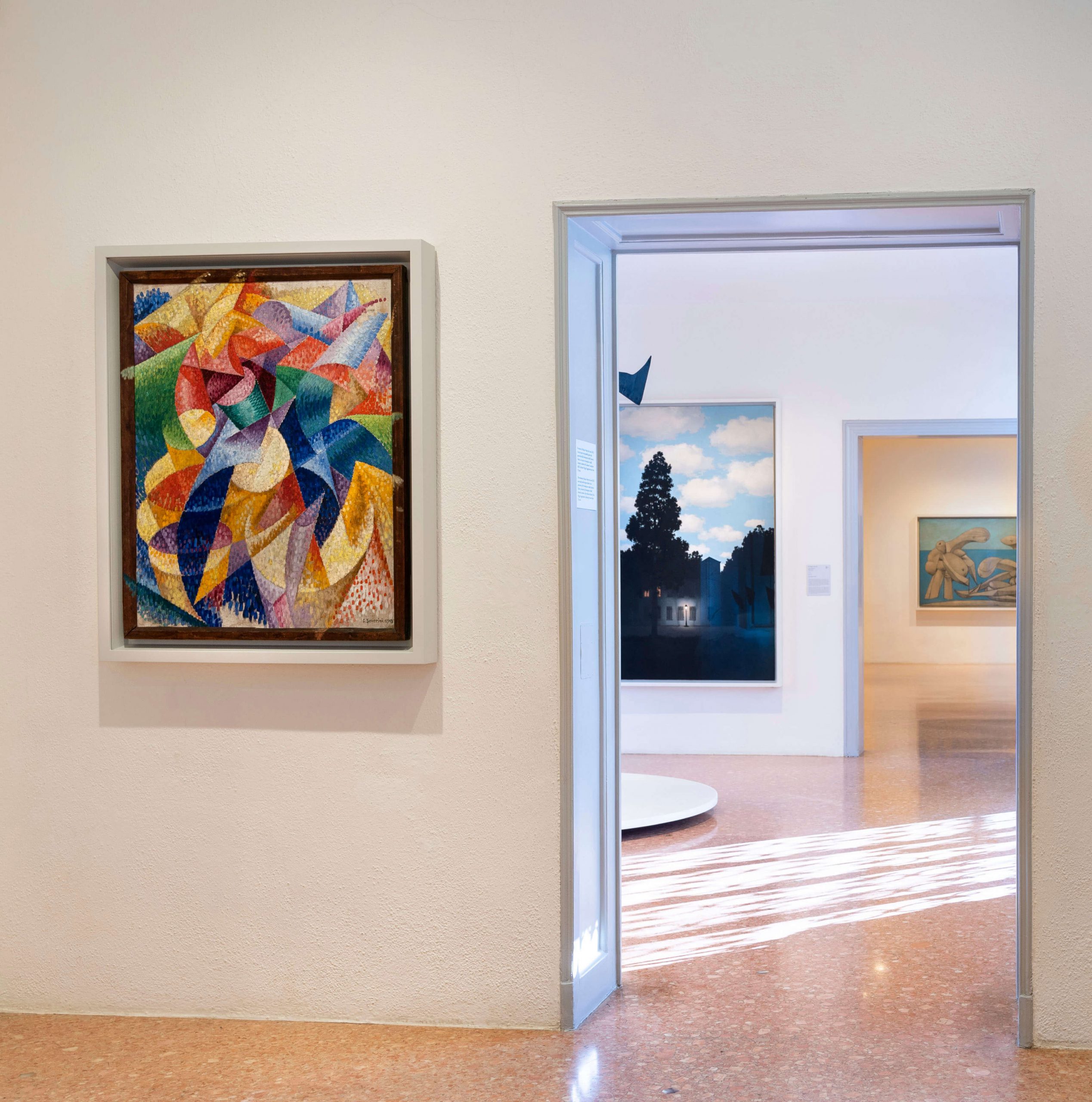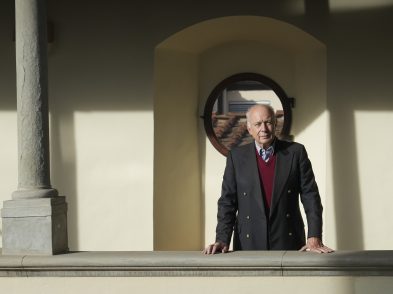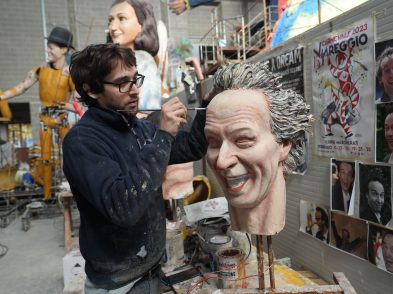It is early morning and the cleaning lady is singing in a serious soprano as she sweeps the terrazzo alla veneziana floors. The rooms are flooded with riverbero, the reflection of the light from the Grand Canal, dancing on the walls. For the moment, I lose myself in the spell of Pollock’s Alchemy. Then I look out on the terrace and there he is: Marini’s Angel of the City, greeting the world with open arms. But I mustn’t linger: there are still paintings by Klee, Kandinsky and Chagall, all sleeping in their pajamas.
That was my life 20 years ago, when, with 28 other students from around the world, I interned for Peggy Guggenheim’s extraordinary private art collection, in Venice’s revered Palazzo Venier dei Leoni. The patron of the arts’ beloved home and collection became one of the finest museums of modern art in the world, with masterpieces by Umberto Boccioni, Alexander Calder, Salvador Dalí, Marcel Duchamp, Max Ernst, Leonor Fini, Alberto Giacometti, Grace Hartigan, René Magritte, Pablo Picasso, Jackson Pollock and Germaine Richier, in addition to many other 20th-century artists.

The Peggy Guggenheim Collection, Palazzo Venier dei Leoni, Venice. © Peggy Guggenheim Collection, Venice. Photo Matteo De Fina
Starting in 1951, Peggy generously opened her house museum to the public three afternoons a week from Easter to October. Part of her mission was to safeguard and share the collection that she created with passion and determination: “I dedicated myself to my collection. A collection means hard work. It was what I wanted to do and I made it my life’s work. I am not an art collector. I am a museum.”
Following Peggy’s spirit, who believed that art should be accessible to everyone, in 1980, the first museum director, Philip Rylands, established a small internship program. He issued an invitation for young persons to assist in the early days of the Peggy Guggenheim Collection, which over the years has developed into a competitive international internship program and an unparalleled learning experience in the art field. It was the first, and today, forty years later, the only program of its kind in Italy. For young people interested in the arts, an internship at the Peggy Guggenheim Collection provides a unique opportunity to benefit from in-depth exposure to modern masterpieces and involvement in the rich cultural environment of Venice. The steady expansion of the Peggy Guggenheim Collection from 1980 to today parallels a comparable growth in the internship program. The number of students participating in the internship program has increased from the initial six to as many as thirty students per month. In 2019, from approximately 1,000 applicants, 157 from 47 different countries were successful.

PGC Interns in June 2000 seated in the courtyard of the Palazzo Venier dei Leoni. Photo Mariana Cánepa Luna
But the internship program as well as the daily operations of the museum are now facing hard times. Due to 86 days of closure, the loss of revenue from the ticket office and two museum shops amounts to two million euro. For a non-profit organization such as the Peggy Guggenheim Collection, the Italian branch of The Solomon R. Guggenheim Foundation, this means the absence of resources to carry out its educational mission. The museum had a slow restart, only opening to the public on Saturdays and Sundays in June, plus Fridays in July, with a cap on and a reduction in admissions. The museum staff and the public have enthusiastically embraced the reopening, but limited entry does not solve the problem, although the collection has now resumed its usual six days a week schedule. The temporary exhibition, Migrating Objects, remains closed, the publication of catalogs has been suspended and the upcoming exhibition schedule modified. The goal is to guarantee the museum’s free activities and public programs, including Art Talks, Kids’ Days workshops, activities for the visually impaired and senior citizens, and public programs related to exhibitions, as well as the temporary exhibitions and catalogs.
For this reason, the Peggy Guggenheim Collection has launched a special fundraising campaign, Together for the PGC, to ensure that this vast artistic heritage, which has transformed the lives of so many visitors, remains open and accessible to all in the future. Even the smallest gesture makes an important impact as the museum begins a new chapter in its history.

The Peggy Guggenheim Collection, Palazzo Venier dei Leoni, Venice. Left to right: Gino Severini, Sea=Dancer (Mare=Ballerina), January 1914; René Magritte, Empire of Light (L’Empire des lumières), 1953–54; Pablo Picasso, On the Beach (La Baignade), February 12, 1937. © Peggy Guggenheim Collection, Venice. Photo Matteo De Fina
For me personally, those days in the spring of 2000 as an intern at the PGC remain some of the happiest times in my life. Those pajamas I mentioned were the best part of the job. Each painting in the collection has its own tailor-made “pajama”, which the interns put on at the end of the day and take off first thing in the morning. It is a necessary part in the conservation of these priceless works that would otherwise be exposed to the magical early morning light and reflections of the Grand Canal. Let’s help this precious museum to kiss the paintings goodnight and to ensure that future generations will continue to see that unique Venetian light twinkling on these works for years to come.

Peggy Guggenheim on the steps of the Grand Canal terrace, on the occasion of the first show she organized at Palazzo Venier dei Leoni, Mostra di Scultura Contemporanea, Venice, September 1949. Photo Archivio Cameraphoto Epoche. Solomon R. Guggenheim Foundation, Venice, Gift, Cassa di Risparmio di Venezia, 2005.
Donate today: donate.guggenheim-venice.it







